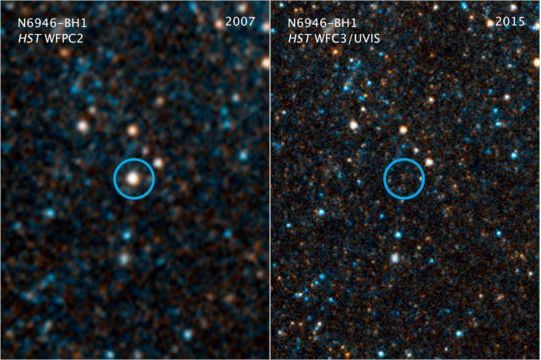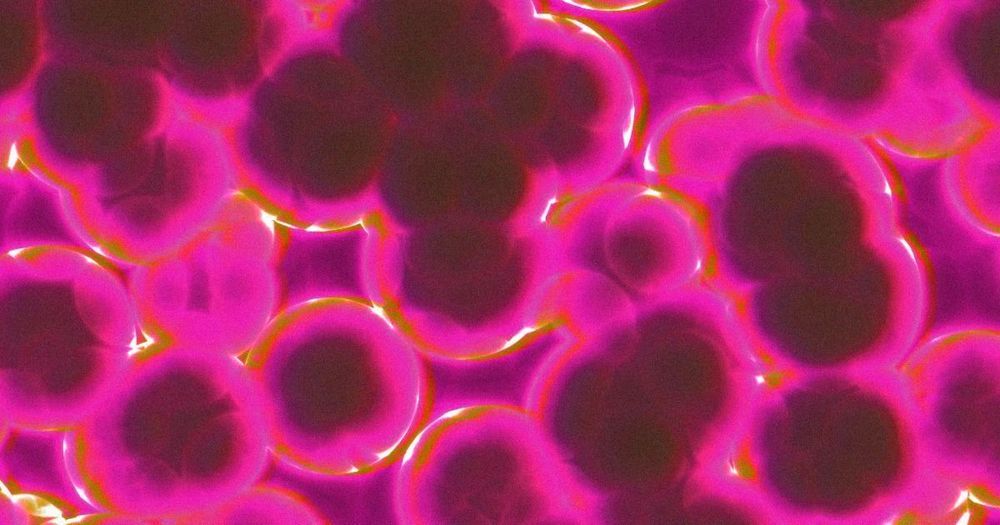Page 8910
Apr 9, 2019
Research team expands quantum network with successful long-distance entanglement experiment
Posted by Genevieve Klien in categories: computing, particle physics, quantum physics
Scientists from the U.S. Department of Energy’s Brookhaven National Laboratory, Stony Brook University, and DOE’s Energy Sciences Network (ESnet) are collaborating on an experiment that puts U.S. quantum networking research on the international map. Researchers have built a quantum network testbed that connects several buildings on the Brookhaven Lab campus using unique portable quantum entanglement sources and an existing DOE ESnet communications fiber network—a significant step in building a large-scale quantum network that can transmit information over long distances.
“In quantum mechanics, the physical properties of entangled particles remain associated, even when separated by vast distances. Thus, when measurements are performed on one side, it also affects the other,” said Kerstin Kleese van Dam, director of Brookhaven Lab’s Computational Science Initiative (CSI). “To date, this work has been successfully demonstrated with entangled photons separated by approximately 11 miles. This is one of the largest quantum entanglement distribution networks in the world, and the longest-distance entanglement experiment in the United States.”
This quantum networking testbed project includes staff from CSI and Brookhaven’s Instrumentation Division and Physics Department, as well as faculty and students from Stony Brook University. The project also is part of the Northeast Quantum Systems Center. One distinct aspect of the team’s work that sets it apart from other quantum networks being run in China and Europe—both long-committed to quantum information science pursuits—is that the entanglement sources are portable and can be easily mounted in standard data center computer server racks that are connected to regular fiber distribution panels.
Apr 9, 2019
Media Advisory: Press Conference on First Result from the Event Horizon Telescope
Posted by Pat Maechler in category: cosmology
Tomorrow (April 10) at 3pm CEST (9am Eastern Time) the first results from the Event Horizon Telescope (EHT) will be announced:
The scientific mission of the EHT is to capture an image of a black hole horizon. So far, we have indirect evidence for the existence of a black hole horizon, but have not actually “seen” one.
ESO, european organisation for astronomical research in the southern hemisphere.
Apr 9, 2019
The EU releases guidelines to encourage ethical AI development
Posted by Derick Lee in categories: information science, policy, robotics/AI
The European Commission recommends using an assessment list when developing or deploying AI, but the guidelines aren’t meant to be — or interfere with — policy or regulation. Instead, they offer a loose framework. This summer, the Commission will work with stakeholders to identify areas where additional guidance might be necessary and figure out how to best implement and verify its recommendations. In early 2020, the expert group will incorporate feedback from the pilot phase. As we develop the potential to build things like autonomous weapons and fake news-generating algorithms, it’s likely more governments will take a stand on the ethical concerns AI brings to the table.
The EU wants AI that’s fair and accountable, respects human autonomy and prevents harm.
Apr 8, 2019
A star turned into a black hole before Hubble’s very eyes
Posted by Tracy R. Atkins in category: cosmology
Apr 8, 2019
Confirmed: New phase of matter is solid and liquid at the same time
Posted by Genevieve Klien in category: materials
Apr 8, 2019
How a New Cancer ‘Vaccine’ Fights Tumors Throughout the Body
Posted by Paul Battista in category: biotech/medical
A new cancer “vaccine” that’s injected directly into a single tumor can trigger the immune system to attack cancer cells throughout the body, a small new study suggests.
The researchers say that the experimental therapy essentially turns tumors into “cancer vaccine factories,” where immune cells learn to recognize the cancer before seeking it out and destroying it in other parts of the body. “[We’re] seeing tumors all throughout the body melting away” after injecting just one tumor, said lead study author Dr. Joshua Brody, director of the Lymphoma Immunotherapy Program at the Icahn School of Medicine at Mount Sinai in New York.
Still, the research, published today (April 8) in the journal Nature Medicine, is very preliminary. The therapy has only been tested in 11 patients with non-Hodgkin’s lymphoma (a cancer of immune system cells), and not all of these patients responded to the treatment. But some patients did have remission for relatively long periods, and the results were promising enough that the therapy is now also being tested in patients with breast and head and neck cancers, the authors said. [7 Odd Things That Raise Your Risk of Cancer (and 1 That Doesn’t)].
Continue reading “How a New Cancer ‘Vaccine’ Fights Tumors Throughout the Body” »
Apr 8, 2019
The Galaxy S10’s fingerprint reader was thwarted by a 3D printer
Posted by Quinn Sena in categories: 3D printing, privacy
Apr 8, 2019
Astronomers Have Detected Structures on The Sun That Lead to Weird ‘Plasma Rain’
Posted by Quinn Sena in category: space
It’s one of the most enduring mysteries of the Sun: why the superheated surface of this great ball of glowing plasma is actually cooler than its outer atmosphere, called the corona.
Scientists now have a new explanation for this hotly debated topic, and the answer was hidden in a strange solar phenomenon that’s never been observed quite like this before: a deluge of plasma rain falling within newly discovered magnetic structures called Raining Null Point Topologies.
On Earth, when it gets hot, water evaporates, turning into steam that lifts into the atmosphere, before cooling effectively reverses the process: water molecules condense inside clouds, which later drop rainfall over the land, oceans, and rivers below.
Apr 8, 2019
Deadly “Super Fungus” Could Be the Beginning of a Global Epidemic
Posted by Quinn Sena in category: biotech/medical
Bacteria’s ability to develop antibiotic resistance is well known — but it turns out fungi are also evolving to withstand modern medicine.
Now one such fungus is cropping up in hospitals all across the globe and killing half the people who contract it within 90 days, according to an alarming story by The New York Times — raising concerns about a new global epidemic.


















